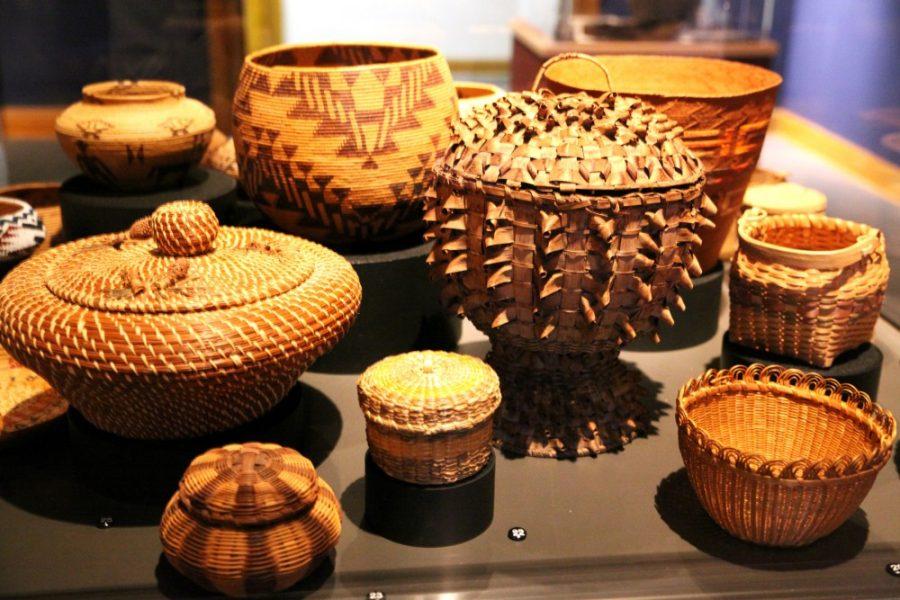Amid the hustle to class, students may not realize that the Arizona State Museum is home to some of the most rare and highly coveted objects in the world. With the same artistry that is on display in nationally renowned museums like the Smithsonian Institute and The Metropolitan Museum of Art in New York City, students have access to some of the world’s most valuable basketry and pottery.
“It’s a living, breathing art form in Arizona,” said Darlene Lizarraga, the museum’s director of marketing.
The museum prides itself on the wide variety of artistry it makes accessible to the community, and students in particular. The basketry exhibit, “Basketry Treasured,” displays traditions of the Southwest through the 25,000 baskets, dating back to 6,000 years ago, that the museum has curated and put on display for the public to enjoy. While the baskets come from all over, the Southwest has some of the best basketry anywhere in the world, Diane Dittemore, assistant curator of ethnological collections.
“One of the reasons that basketry is so important is it’s one of the oldest technologies in our region,” Dittemore said. “It predates pottery, say, by thousands of years. It marks a continuous thread between the ancient and the contemporary people.”
On display in the museum are pieces from Navajo, Apache, Tohono O’odham and other contemporary Native American nations. The baskets feature various styles of weaving, including coiling, twining, wickerwork and plating, all of which are immensely complex and time-consuming, Dittemore said.
The basketry, in addition to being an art form, is an important learning tool for foreign students and those who aren’t local to the Southwest, Dittemore added.
“We have people coming from all over the world who are students here and many of them may not have any real understanding about the native people, and they maybe don’t have any way to find out,” she said.
While basketry is still utilized as an art form today, it also provides insight into the history of this region.
“It’s perhaps one of the oldest craft techniques in our region, and it’s a window, even the baskets made today, into how people lived in the past,” Dittemore said. “They’re real windows into the culture, because really, that’s what we’re all about, is using the objects to tell the stories and the people who made them.”
Also on display at the museum is “The Pottery Project,”the world’s largest collection of Southwest Indian pottery, according to the museum’s website. The exhibit is home to more than 20,000 ceramics from pre-Hispanic times to today, and showcases the many functions of pottery in both historical and modern times, said Andrew Higgins, assistant to the curator of Ethnological Collections.
“Pottery tells us a lot about how people lived and what they did,” Higgins said. “A lot of the pots have painted designs and from those designs, you can really analyze and get an idea of what life was like and what’s important to them.”
The pottery is classified into displays based on design, form and function, curio and anomalies, with many of them having great artistic and monetary value.
“It shows that Native American art has been valued for hundreds of years and still is today,” Higgins said.
“The Pottery Project” is an ongoing display at the museum and “Basketry Treasured” is set to continue through January. Both exhibitions are free to students.
Follow Jessica Schrecker @JKSchrecker









